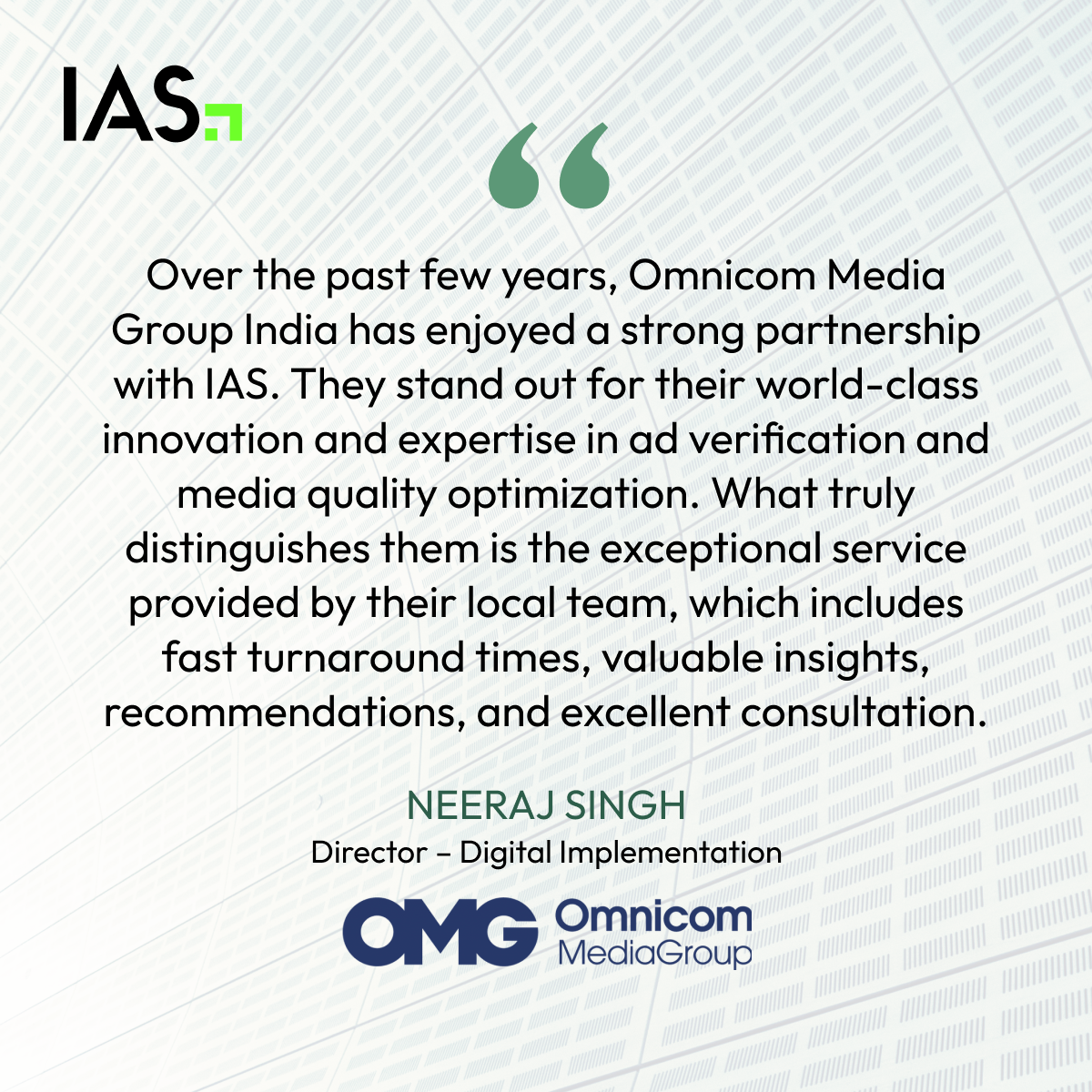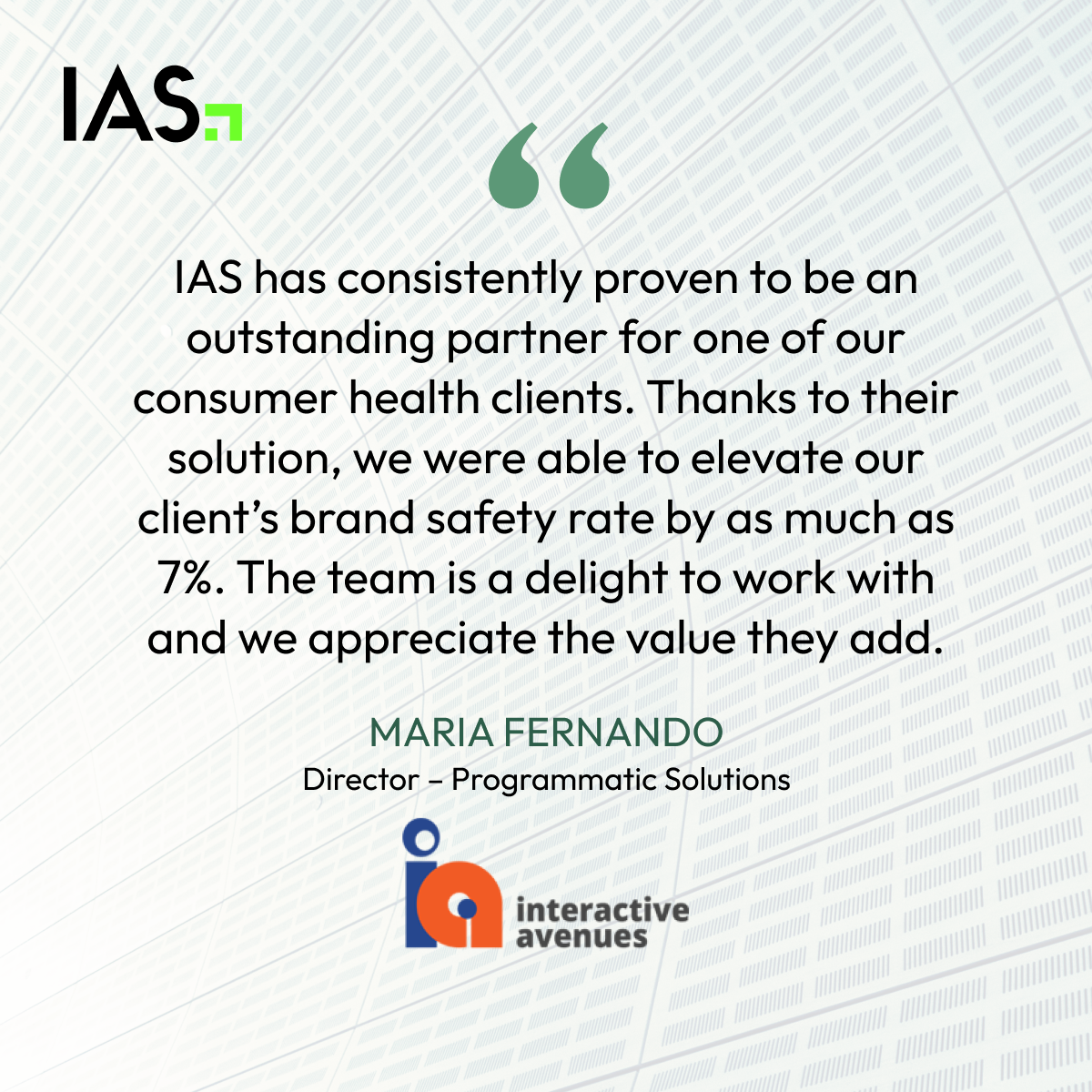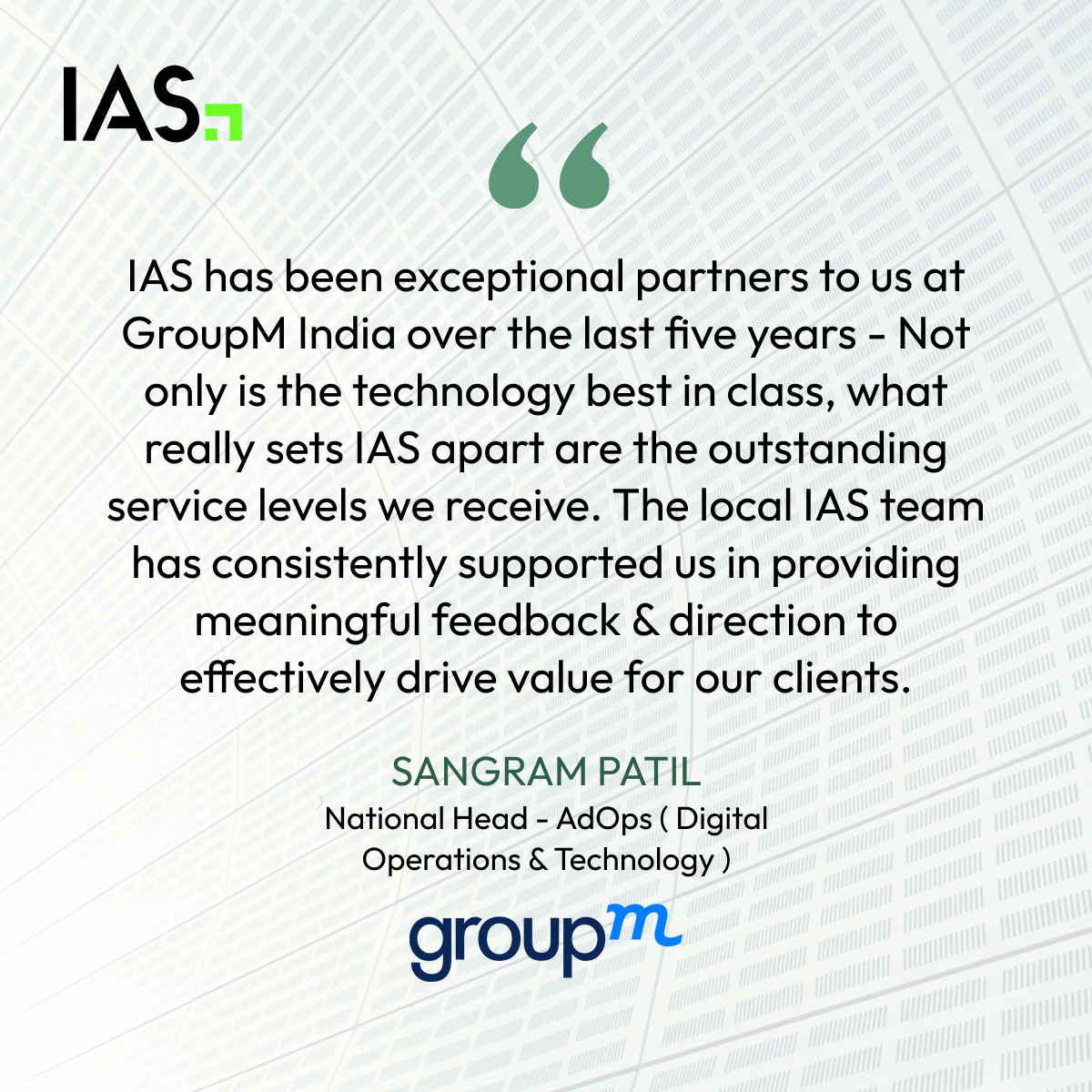By Etienne Watrigant, Channel Sales, APAC, Integral Ad Science (IAS)
According to eMarketer July 2019 reports, in APAC, 81% of internet users have a social media presence and it’s projected that by 2023, there’ll be 2 billion social media users in APAC! In accordance with these jaw-dropping stats, the potential consumer touchpoints for advertisers today are huge. However, as social users spend less time per visit to a social platform compared to a traditional news site, brands have only a finite amount of time to engage with that user, in a more and more crowded environment. But the number of times a user visits a social platform over a given day is in fact much greater, and unsurprisingly a greater share of advertiser budget is now flowing into the major social platforms.
Consequently, it is vital for advertisers and social media buyers to understand the measurement tactics available to them and employ best practices. We have used the significant learnings produced by our social media campaign measurement and verification solutions to develop essential insights on how to set up a social media campaign for success.
1. Define your business objective and use it to set up your campaign strategy
It’s important to start by identifying your Northstar or the business objective you’re trying to accomplish by investing in social media. Keep it consistent throughout the campaign. It’s important to make sure that the objective of the campaign matches the strengths of the platforms to be confident that the budgets are allocated well and the campaign can be set up for success. Avoid getting caught in multiple KPIs and when it comes to defining what campaign success will look like- make sure it’s in alignment with the overall business objective across platforms. Do not lose sight of the Northstar.
For example, as a car manufacturer, your business objective might be to sell X new SUV by the end of the year. To accomplish that, you need consumers to be aware of that car, you want to identify who’s interested in it, then you may want those consumers to go to your website or to your POS, then you may want to tell them a specific story to finally get them to buy your car. The Northstar is selling cars, the rest are strategies to accomplish that goal.
2. Know your social media outreach objectives, and set up your campaigns for success
Be experimental and steer your budgets towards driving different strategies on social to- eg. is it reach, performance, awareness, retargeting — these different strategies should tie back to the main objective set at the beginning of the campaign.
Empower your team to experiment, monitor and optimise the ongoing campaign to make sure that the campaign is not left alone and constant learning are incorporated and plowed back into the campaigns.
It’s also important to get the basic social media hygiene in place, such as the naming convention to make sure that the campaign names are correctly tagged so that you can derive deeper and valuable insights from the social media channels you’re running the campaign on. Examples of good naming conventions are–
Initiative | Environment | Campaign Objective | Audience | Geo | Targeting | Creative Type | Creative Name (use consistent separators like “|” or “~” etc…) — Ex: Summer Sale | IS | BrandAwareness | M25 – 54 | UK | AutoEnthousiasts | Carousel | Red SUV
Be as granular as possible: you can add creatives call to actions, hashtags, creative duration, anything relevant to help you identify what is performing. That will give very valuable insights to your creative agency.
It’s important to make some room for A/B testing the ad groups, different ads, formats, creatives, CTA.. for test and learn and then optimize towards high performing ads on social platforms.
3. You’ll have a huge amount of data, USE IT!
Regular analysis of your third-party measurement data will ensure you get the most out of your partnership with the major social platforms. Assess any decreases in viewability, particularly if you are targeting the same audience over an extended period of time. Due to creative wear-out, you may start to see a creative’s viewability levels drop. This also can be a helpful insight to bring to your creative agency and look to refresh creatives.
There are a range of automated tools within the social platforms that can help optimise creative mid-flight, but won’t necessarily make recommendations about how to spot patterns and human eyeballs, or provide data analysis for this, which is where verification data becomes essential. Since it’s a long-term play, make sure your next campaign is driven by data and insights gathered from previous campaigns. It’s a process and you need to keep working at it to make sure you drive further experimentation to build your campaign for success.
Interested to learn more on how Integral Ad Science (IAS) can help improve the media quality of your social media campaigns in APAC? Get in touch with us today.
 Share on LinkedIn
Share on LinkedIn Share on X
Share on X




